1-Ethyl-1,3-dihydro-2H-benzimidazol-2-one
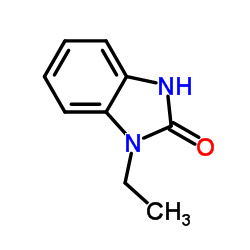
1-Ethyl-1,3-dihydro-2H-benzimidazol-2-one structure
|
Common Name | 1-Ethyl-1,3-dihydro-2H-benzimidazol-2-one | ||
|---|---|---|---|---|
| CAS Number | 10045-45-1 | Molecular Weight | 162.189 | |
| Density | 1.161±0.06 g/cm3 | Boiling Point | N/A | |
| Molecular Formula | C9H10N2O | Melting Point | 122 ºC | |
| MSDS | Chinese USA | Flash Point | N/A | |
| Symbol |

GHS07 |
Signal Word | Warning | |
Use of 1-Ethyl-1,3-dihydro-2H-benzimidazol-2-one1-EBIO is an activator of Ca2+ sensitive K+ channels. 1-EBIO is used to study the role of K+ channels in diverse physiological functions[1]. |
| Name | 1-Ethyl-1H-benzo[d]imidazol-2(3H)-one |
|---|---|
| Synonym | More Synonyms |
| Description | 1-EBIO is an activator of Ca2+ sensitive K+ channels. 1-EBIO is used to study the role of K+ channels in diverse physiological functions[1]. |
|---|---|
| Related Catalog | |
| References |
| Density | 1.161±0.06 g/cm3 |
|---|---|
| Melting Point | 122 ºC |
| Molecular Formula | C9H10N2O |
| Molecular Weight | 162.189 |
| Exact Mass | 162.079315 |
| PSA | 37.79000 |
| LogP | 1.39 |
| Appearance of Characters | powder |
| Index of Refraction | 1.566 |
| Storage condition | Store at RT |
| Water Solubility | Slightly soluble (1.6 g/L) (25 ºC) |
Synonym: Section 2 - COMPOSITION, INFORMATION ON INGREDIENTS
Risk Phrases: Section 3 - HAZARDS IDENTIFICATION EMERGENCY OVERVIEW
Not available. Potential Health Effects The toxicological properties of this material have not been investigated. Use appropriate procedures to prevent opportunities for direct contact with the skin or eyes and to prevent inhalation. Section 4 - FIRST AID MEASURES Eyes: Flush eyes with plenty of water for at least 15 minutes, occasionally lifting the upper and lower lids. Get medical aid immediately. Skin: Get medical aid. Flush skin with plenty of soap and water for at least 15 minutes while removing contaminated clothing and shoes. Remove contaminated clothing and shoes. Ingestion: If victim is conscious and alert, give 2-4 cupfuls of milk or water. Get medical aid immediately. Inhalation: Get medical aid immediately. Remove from exposure to fresh air immediately. If not breathing, give artificial respiration. If breathing is difficult, give oxygen. Notes to Physician: Treat symptomatically and supportively. Section 5 - FIRE FIGHTING MEASURES General Information: As in any fire, wear a self-contained breathing apparatus in pressure-demand, MSHA/NIOSH (approved or equivalent), and full protective gear. During a fire, irritating and highly toxic gases may be generated by thermal decomposition or combustion. Extinguishing Media: Use agent most appropriate to extinguish fire. Autoignition Temperature: Not available. Flash Point: Not available. NFPA Rating: Not published. Explosion Limits, Lower: Not available. Upper: Not available. Section 6 - ACCIDENTAL RELEASE MEASURES General Information: Use proper personal protective equipment as indicated in Section 8. Spills/Leaks: Clean up spills immediately, observing precautions in the Protective Equipment section. Section 7 - HANDLING and STORAGE Handling: Wash thoroughly after handling. Remove contaminated clothing and wash before reuse. Avoid contact with eyes, skin, and clothing. Avoid ingestion and inhalation. Storage: Store in a cool, dry place. Keep container closed when not in use. Section 8 - EXPOSURE CONTROLS, PERSONAL PROTECTION Engineering Controls: Use process enclosure, local exhaust ventilation, or other engineering controls to control airborne levels. Personal Protective Equipment Eyes: Wear chemical goggles. Skin: Wear appropriate protective gloves to prevent skin exposure. Clothing: Wear appropriate protective clothing to minimize contact with skin. Respirators: A respiratory protection program that meets OSHA's 29 CFR 1910.134 and ANSI Z88.2 requirements must be followed whenever workplace conditions warrant a respirator's use. Section 9 - PHYSICAL AND CHEMICAL PROPERTIES Physical State: Not available. Appearance: beige to brown Odor: Not available. pH: Not available. Vapor Pressure: Not available. Vapor Density: Not available. Evaporation Rate: Not available. Viscosity: Not available. Boiling Point: Not available. Freezing/Melting Point: 120.00 - 126.00 deg C Decomposition Temperature: Not available. Solubility: Not available. Specific Gravity/Density: Not available. Molecular Formula: C9H10N2O Molecular Weight: 162.19 Section 10 - STABILITY AND REACTIVITY Chemical Stability: Stable under normal temperatures and pressures. Conditions to Avoid: Incompatible materials, strong oxidants. Incompatibilities with Other Materials: Not available. Hazardous Decomposition Products: Irritating and toxic fumes and gases. Hazardous Polymerization: Not available. Section 11 - TOXICOLOGICAL INFORMATION RTECS#: CAS# 10045-45-1 unlisted. LD50/LC50: Not available. Carcinogenicity: 1-ethyl-2-benzimidazolinone, 98% - Not listed by ACGIH, IARC, NIOSH, NTP, or OSHA. See actual entry in RTECS for complete information. Section 12 - ECOLOGICAL INFORMATION For further information, contact Fisher Scientific. Section 13 - DISPOSAL CONSIDERATIONS Dispose of in a manner consistent with federal, state, and local regulations. Section 14 - TRANSPORT INFORMATION CDG/CPL IMO Not regulated as a hazardous material. IATA Not regulated as a hazardous material. RID/ADR Not regulated as a hazardous material. Canadian TDG No information available. Section 15 - REGULATORY INFORMATION European/International Regulations European Labeling in Accordance with EC Directives Hazard Symbols: Not available. Risk Phrases: Safety Phrases: S 24/25 Avoid contact with skin and eyes. WGK (Water Danger/Protection) CAS# 10045-45-1: Canada None of the chemicals in this product are listed on the DSL/NDSL list. WHMIS: Not available. CAS# 10045-45-1 is not listed on Canada's Ingredient Disclosure List. Exposure Limits US FEDERAL TSCA CAS# 10045-45-1 is not listed on the TSCA inventory. It is for research and development use only. SECTION 16 - ADDITIONAL INFORMATION N/A |
| Precursor 10 | |
|---|---|
| DownStream 1 | |
| HS Code | 2933990090 |
|---|---|
| Summary | 2933990090. heterocyclic compounds with nitrogen hetero-atom(s) only. VAT:17.0%. Tax rebate rate:13.0%. . MFN tariff:6.5%. General tariff:20.0% |
|
Differentiation between human ClC-2 and CFTR Cl- channels with pharmacological agents.
Am. J. Physiol. Cell Physiol. 307(5) , C479-92, (2014) It has been difficult to separate/identify the roles of ClC-2 and CFTR in Cl(-) transport studies. Using pharmacological agents, we aimed to differentiate functionally between ClC-2 and CFTR Cl(-) cha... |
|
|
Type 2 diabetes: increased expression and contribution of IKCa channels to vasodilation in small mesenteric arteries of ZDF rats.
Am. J. Physiol. Heart Circ. Physiol. 307(8) , H1093-102, (2014) Impaired endothelial function, which is dysregulated in diabetes, also precedes hypertension. We hypothesized that in Type 2 diabetes, the impaired endothelium-dependent relaxation is due to a loss of... |
|
|
Firing pattern modulation through SK channel current increase underlies neuronal survival in an organotypic slice model of Parkinson's disease.
Mol. Neurobiol. 51(1) , 424-36, (2015) Dopaminergic (DA) neurons in substantia nigra pars compacta (SNc) are vulnerable to excitotoxicity in Parkinson's disease (PD). Neurotoxic stimuli may alter the firing patterns of DA neurons. However,... |
| 2H-Benzimidazol-2-one, 1-ethyl-1,3-dihydro- |
| EINECS 233-148-1 |
| 1-Ethyl-1,3-dihydro-2H-benzimidazol-2-one |
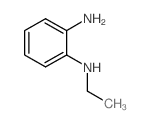 CAS#:23838-73-5
CAS#:23838-73-5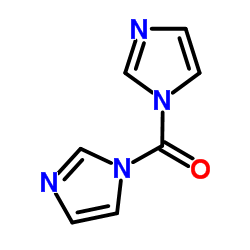 CAS#:530-62-1
CAS#:530-62-1 CAS#:74375-44-3
CAS#:74375-44-3![1-ethyl-3-(1-phenylvinyl)-1,3-dihydro-2H-benzo[d]imidazol-2-one Structure](https://www.chemsrc.com/caspic/219/77556-92-4.png) CAS#:77556-92-4
CAS#:77556-92-4 CAS#:1048344-54-2
CAS#:1048344-54-2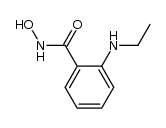 CAS#:20885-66-9
CAS#:20885-66-9 CAS#:599177-43-2
CAS#:599177-43-2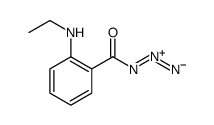 CAS#:91202-08-3
CAS#:91202-08-3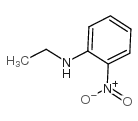 CAS#:10112-15-9
CAS#:10112-15-9 CAS#:39573-31-4
CAS#:39573-31-4